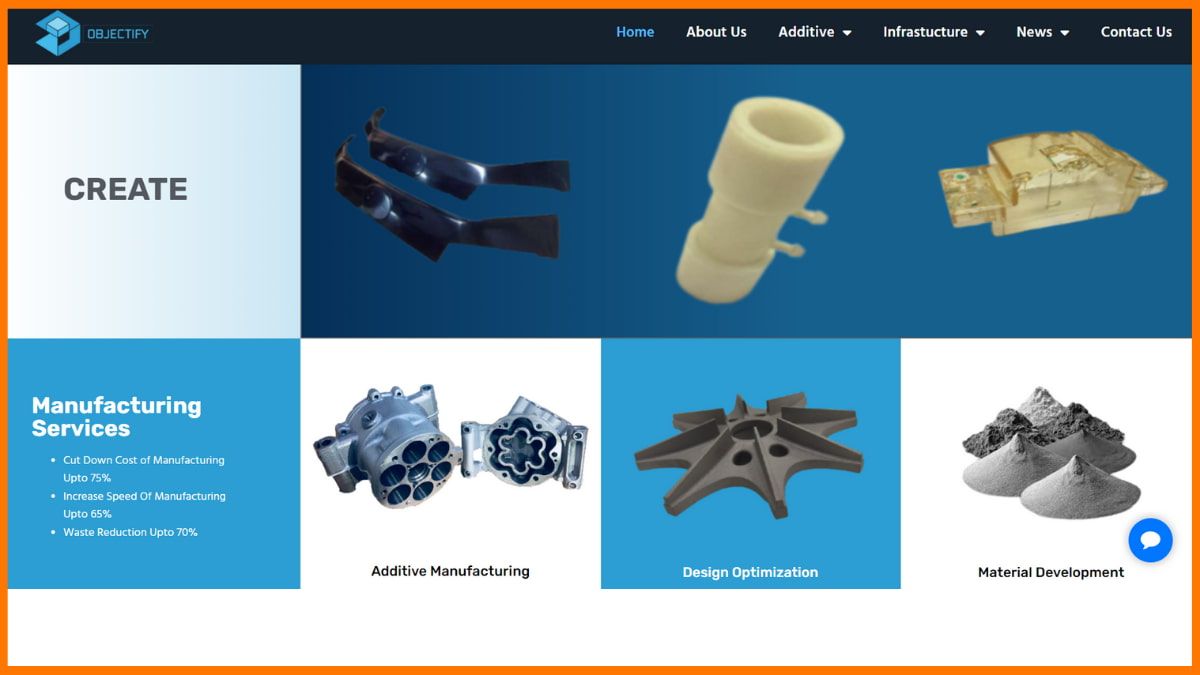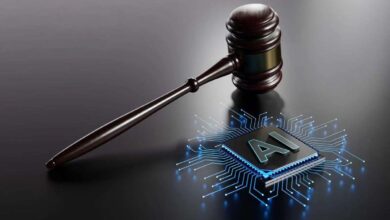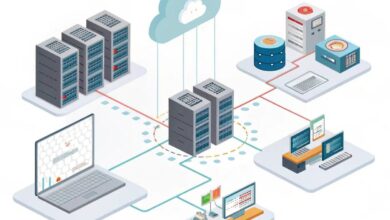Top 10 Best and Most Reputed Startups in Kanpur 2022

Top 10 Best and Most Reputed Startups in Kanpur 2022
Kanpur is the one city called the technological research and development hub for most entrepreneurs. It is considered the largest city in the state of Uttar Pradesh. Firstly, UP has made the most rapid urbanization in recent years. It has been giving opportunities to many of the city’s entrepreneurs provided the youth with the best platforms for employment.
After the launch of economic liberalization policies in the country, it has opened its arms to welcoming most companies or organizations. It has the best cottage industries like then handloom and handicraft, which have majorly got the attention of the people of the city. One of the most famous industries is the leather industry, which is very famous for the type of leather products and has acclaimed the position as the most famous one. The main mineral of the district is sand, which is available in plenty in the Ganga River and is mainly used in the construction of the homes in the city, bridges and roads of the city.
IIT Kanpur celebrates its 54th gathering with Prime Minister Narendra Modi as the event’s chief guest. Several of the IIT Kanpur start-ups have contributed some of the most innovative and unique ideas in the start-ups. PM Modi has also stated, “This is a vibrant institution, which has made pioneering contributions towards science and innovations.”. However, COVID-19 has also made some losses to most cities; Kanpur also faced the same situation as the other cities.
Below are some significant and successful start-ups that have acquired a great place in the city and worked with great speed and organization.
1. AUS

AUS company, which is for Aarav Unmanned Systems, is a start-up creating or developing the best professional drone solutions for the significant enterprise working in the city. The main point of this company is the drone intelligence, hardware optimization, and innovations made in the drone’s designs.
It originated from the IIT Kanpur in 2013 by four close friends, Nikhil Upadhye, Suhas Banshiwala, Vipul Singh and Yeshwanth Reddy. It is called the first Indian company to have professional solutions for drones. In the company’s last five years, the drones manufactured in the company are constantly providing world-class technology benchmarks to other companies and inspiring them a lot because of their continuous hard work and efforts on Drone Intelligence.
Their other services like Hardware optimization and the design in the innovations have also played a significant part in their drone solutions and intelligence. It has played a substantial role across several verticals like private and public sectors. The company is backed by some of the most trusted firms and individuals like GrowX, 500 Start-ups and Start-speed.
The major investors of the company include 2 One 4 Capital, Valero Capital, Growx Ventures. It has services like Highest UAV Data Capture Capability up to 5000 Hectares per day and the Highest Government Empanelment across the country. They have several project outputs like 3D point cloud, Contours, Planimetry maps, Stockpiles, Volumetric estimates, Environmental assessments, Surface plans and base maps.
Company Overview
| Legal Name | Aarav Umanned Systems Pvt Ltd. |
| Industries | Delivery, Drones & Robotics |
| Founder(s) | Nikhil Upadhye, Suhas Banshiwala, Vipul Singh & Yeshwanth Reddy |
| Founded Date | 2013 |
| Total Funding Amount | $748.5K |
| Investors | BellWeather Advisors & 500 Startups |
2. Foodmonk

Foodmonk is a Kanpur start-up offering the best restaurants and food businesses with an easier way for the people of Kanpur, an easy way to manage everything. Foodmonk is the one platform that provides a suite of tools for businesses that can easily keep a tab on their analytics and provide the best customer experience through Foodmonk’s best features like their e-menus and the mode of online payments.
Abhishek is the known founder of the company who has been daily adding his innovations and ideas. He started the business with the concept of providing basic service. Foodmonk is a business management solution and an event marketplace for famous caterers. It is a food-tech start-up that offers end-to-end solutions for most of the cafeterias in Kanpur and even manages the catering to all the significant events happening in the city.
All the food lovers can easily enjoy their website and application, allowing them to have the city’s delicacies easily. The company acts as a facilitator in the process of ordering while considering their delivery to be handled by the team members of their restaurant.
It was founded in 2015 and had a total funding amount of $3.49K with its long-term investors, 100X.VC. This application is helping the billion-dollar catering industry acquire the best digital solutions in food ordering. It dealt with the business solutions industry and was established this company in 2018.
Company Overview
| Legal Name | Foodmonk Delivery Pvt Ltd |
| Industries | Catering & Marketplace |
| Founder | Abhishek Chaudhary |
| Founded Date | 2015 |
| Total Funding Amount | Funding |
| Investors | 100X.VC. |
3. Helpusgreen

It is the most creative kind of start-up on the list, the company of Hel[pusgreen, as the name suggests, helps collect the flowers left in temples and different mosques from all around the city. Then the recycling service of the company allows for the function of cresting the products like incense sticks, eco-packaging and soaps. The start-up helps the poor women by providing them with the start-up through this company or the lower-employ women.
It saves the Ganga River, which can be easily polluted by pesticides and harmful materials like infused roses and marigolds. This start-up was founded by Ankit Agarwal and his friend Karan Rastogi in 2015. Both of the friends had a lot of issues when they started this business, as it included the different religion and their places. Nowadays, you can use this company to immerse yourself in the fragrance of Helpusgreen.
It started with such a small group, and now it has emerged with its 50 eco-warriors who are constantly making people aware of the importance of cleanness and making them do specific jobs. The team of Helpusgreen collets 2.5 tonnes of flower waste every day and then flower cycle into different products like organic fertilizers, soaps and festive goods. Because of the pandemic, now they collect the flowers from the farmers directly, as they do not have a market to sell them.
The company of Helpusgreen had acclimated to a great position when it collaborated with the biggest incense manufacturer in India, ZedBlack. This company is working on a network of thirty-six companies operating the depots across India, with their products which have crossed the figures of 7,50,000r of their retail outlets via their 3300 distributors.
Company Overview
| Legal Name | Helpusgreen LLP Pvt Ltd. |
| Industries | Recycling |
| Founder(s) | Ankit Agarwal & Karan Rastogi |
| Founded Date | 2015 |
| Total Funding Amount | NA |
| Investors | Acquired |
4. MyObjectify

Want the best 3D printing technology? Then, the platform of MyObjectify is considered the best and offers services to most of the companies working in the city. This start-up was again founded by an IIT Kanpur student who opened his start-up with a small 3D printing machine. The founders of the friends who opened this were Ankit Sahu, Arpit Sahu and Umang Kedia. It does the best additive manufacturing of the 3D printing machines and provides polymer and mental solutions.
The start-up was founded in 2013 with the significant industry of 3D printing. MyObjectify Technologies is the one platform that is India’s largest AMSP, that is, Additive Manufacturing Service Provider, which helps with the best innovative designs that are optimized for the function in the metal. Customers can easily choose their plastic in their material development, design optimization and additive manufacturing.
The company’s manufacturing system has in-house pieces of equipment, which can easily facilitate the complete manufacturing of their components. The company’s key competencies include rapid prototyping, small series production, designing the conformal cooling channels, topology optimization and material development, and many more things. They have fetched some great reviews from their customers, providing them with the most reliable and long-term services. Just sign in on their website, and then you can go on with the procedures very quickly.
Company Overview
| Legal Name | MyObjectify Technologies Pvt Ltd. |
| Industries | 3D Printing & Industrial Engineering |
| Founder(s) | Arpit Sahu , Ankit Sahu & Umang Kedia |
| Founded Date | 2013 |
| Total Funding Amount | $40K |
| Investors | SIDBI Innovation & Incubation Centre |
5. MrRoom
It is a company that simplifies the whole process of searching for all the best rental rooms close to the desired locations of their customers. It is the real estate platform that helps the customers search for the different kinds of games in the desired type of location. The venue of Mrroom provides a wide variety of verified hotels and PG, which were secured entirely and safely registered on their platform.
Ali Abbas founded this platform of giving rent rooms to customers in 2018. It was his college days when he faced many problems while looking for rooms and rentals and then washing them. Hostel accommodation is fully furnished flats for the families in the bachelor and the broker more minor ways that a suitable again for the families and the office customers can quickly join the community and get the best service at the Mrroom pro platform it is called the Kanpur very first of its kind room search starter.
Finding a room has always been an arduous task if you live in a new city and if the people are unknown to you, then the platform of MrRoom is the one thing that comes to your rescue. It provides you with the best possible accommodation range with the best-designed facilities. More than 200 students and families have trusted this. MrRoom aims to simplify the ways of searching for rental rooms and organizing the whole home rental market in the upcoming time. Searching the rooms can be very hassle-free with this company’s platform.
It is a one-stop solution for people who want to focus more on their work and the other things in life rather than waste time finding the necessary facilities to live a comfortable life. It has acquired great feedback from people as many people have already tried their rooms and appreciate the kind of facilities provided. It has the best cleanliness, and you can quickly contact the service room.
Company Overview
| Legal Name | MrRoom |
| Industries | Rental rooms & PGs |
| Founder(s) | Ali Abbas |
| Founded Date | 2018 |
| Total Funding Amount | NA |
| Investors | Acquired |
6. Campus Haat

It is another famous start-up that was founded in the year 2017 in Kanpur. You can get the best marketplace industry with this kind of start-up called Campus Haat. It is the one platform established to give the people of the IIT Kanpur campus a platform to help them get things done in a straightforward and hassle-free manner. This company was founded by Guddu Kumar, the CEO of Campus Haat. Guddu is also a graduate of IIT Kanpur.
He started his start-up to promote the use of the items offered online, rented and bought, and even donated for the noble cause of all low-income families or the city’s poor people. And this start-up has been working on a variety of problems that the students of Kanpur face. It is one community that invites different members under one umbrella of students, professors, local vendors who can quickly join and participate in the campaigns and eventually benefit each other.
You will be exposed to the real problems of working in this start-up, again aiming to provide the best solutions to the students. This company allows you to work directly with your founding team, rapidly improving your communication skills, interacting with the people, and marketing the business understanding.
Understanding the venue very well to get more students and shops and services to connect with them helps in designing and managing the campaigns to promote Campus Haat through the platforms of social media seminars and events And increasing the community size through building the best community programs. You can contact customer support very quickly, managed by the founder of This team member. If we define this start-up, it is something where you can sell, buy, rent and donate.
Company Overview
| Legal Name | Campus Haat Solutions Pvt Ltd. |
| Industries | Marketplace Industry |
| Founder | Akshat Srivastava |
| Founded Date | 2017 |
| Total Funding Amount | NA |
| Investors | Acquired |
7. Sociota

Suppose you want a company or a platform that provides you with the best social media management tool. In that case, Sociota Is the one company making significant progress with this exact purpose. It was founded by two friends, Amitesh Mishra, a girl who is a graduate of IIT Bombay and Nikhil Tiwari, a graduate of Uttar Pradesh Technical University who launched this platform of social data in 2014.
This platform is mainly based on social media management, analytics, engagement, socialization and monitoring of the whole process. It manages all the major social media platforms for different familiar companies. It even monitors people logging in and logging out from the various social media platforms. One of the parent companies of social data is Trident analytical solutions which let them use multiple platforms of Facebook, Twitter, Google and LinkedIn and make their account very quickly on these platforms and manage them.
This platform has been offering great insight into brand building, the marketing of the different brands, consumers behaviour, and the analysis of keyword research. The platform helps you manage all your social media accounts on just a single platform, and you can also work on all those services and do the monitoring as well.
This company lets you do the post scheduling, the principal manages the bulk messages, and manages and monitors all the analytics of your social media. If we talk about this company, it is a social media management and monitoring web-based tool where you can manage multiple platforms in just one go.
Company Overview
| Legal Name | Sociota Solutions Pvt Ltd. |
| Industries | Social Media Management |
| Founder(s) | Amitesh Mishra & Nikhil Tiwari |
| Founded Date | 2014 |
| Total Funding Amount | NA |
| Investors | Acquired |
8. CarCooper
CarCooper is one of the leading companies for providing doorstep car service across north India Park.CarCooper is the one platform that provides all the mechanic mechanics best services performed by highly qualified, professional and most experienced mechanics. All the car lovers who are keeping the car maintained and clean all the time are really in love with this company of Kanpur. It also provides professional drivers to their customers at home or office with all types of vehicles.
The drivers are hired for a few hours to a couple of days, and you can use them, or you can ask them to take you to several destinations that you want to hire them. Founded by Prashant Singh and Rishab Singh, the platform of CarCooper provides the best car services to people in the city of Kanpur at their doorstep. This starter was sounded in 2015, one company to have all the services under one roof. It has the most standardized services, and the team members of CarCooper never compromise on the quality of service they provide to their customers. This company always recommends OEM defined service procedures.
It works with the most genuine spare parts to provide the premium quality service to your car, it has the most verified and export mechanics, which is the largest network, and it just pampers your vehicle like a baby. The best thing about the start-up is that they provide the doorstep service where you can sit back and relax at your home, and all the service is done without any hard work. It gives a free warranty as there is one year warranty after service, after which you can keep running your vehicle without any worry.
CarCooper provides an annual service package where you can get many bundled benefits and the service You can quickly contact them on their website or call on their numbers. Their customers speak the best about their company, which makes it more powerful and even inspires them to improve their service quality and provide the best to best service.
Company Overview
| Legal Name | CarCooper Solutions Pvt Ltd. |
| Industries | Automotive |
| Founder | Prashant Singh |
| Founded Date | 2015 |
| Total Funding Amount | NA |
| Investors | Acquired |
9. Aryan Essential Oils

Aryan essential Oil is a Kanpur-based company, and it is one of the largest producers and manufacturers of wholesale natural essential oils in India. The products manufactured in this company are very high-quality, which allows their customers to do it so well and to use it and even inspire Western countries.
The products we get in this company are very diluted with each other and have no artificial properties in them, and it has the best kind of smells and has made a massive mark for itself across the world. The company was founded in 2014 by Ajay Dixit, Who started to provide hundred per cent organic essential oils and Hydroxy Citronellol in the city.
It has a catalogue that has all the listing range of their products and services offered by the Aryan essential oils. You can get the best price of the sensual oils and even avail of the discounts on the offer always given on different occasions or events.
Company Overview
| Legal Name | Aryan Essential Oils |
| Industries | Food, Beverage , Health Care, Manufacturing & Oils |
| Founder | Ajay Dixit |
| Founded Date | 2014 |
| Total Funding Amount | NA |
| Investors | Funding |
10. Wellnessmonk

Wellness Monk is the one company founded in 2017, known earlier by the name of ‘Pharmacyonnet’, but then the name changed to Wellnessmonk in 2019. This company sells various products for wellness, Healthcare, personal care, mother and baby care, and all the essential household products like beverages, snacks, and groceries.
It deals with their hundred per cent of a technology-driven start-up that has their virtual private servers. It was founded by Giyaan Dixit, Who decided to provide their customers and their followers with the best kind of products related to healthcare and wellness fields. It has the most dedicated in-house team of pharmacists, dieticians, and management experts, making us stand out from the giant marketplaces.
The primary aim of this company is to go green and chemical-free with their wide range of natural products, which have the ingredients in their purest form. You can easily buy their organic products online in India add their website at the lowest price. The company intends to offer the end-user the best experience of their trustworthiness while shopping from their portal. It brings the most exclusive and impressive range of organic products with free shipping and quick delivery.
Company Overview
| Legal Name | Wellnessmonk.com |
| Industries | E-commerce, Health Care & Wellness |
| Founder | Gyaan Dixit |
| Founded Date | 2017 |
| Total Funding Amount | NA |
| Investors | Acquired |
Uttar Pradesh has been making many changes to the emergence of new companies and start-ups. It has been providing many employment opportunities to many people since the pandemic has significantly impacted the country’s economy. Talking about Uttar Pradesh and then Lucknow, Kanpur has been making diverse forms of changes in introducing the best kind of companies and providing adequate facilities to the people of the city.
The city is always striving for What is the best and making simple steps to bring more innovation and uniqueness to the town. Since the Metro rail was introduced to the city, it has turned into a better city with better employment opportunities.
It has been gaining a lot of appreciation from other people for the kind of development it has been showing. Kanpur is known to be the largest city in Uttar Pradesh, and it has witnessed rapid industrialization in recent years. Different industries of handloom, food, technology, handicraft, and many more have been providing the best livelihood to many people.
edited and proofread by nikita sharma





